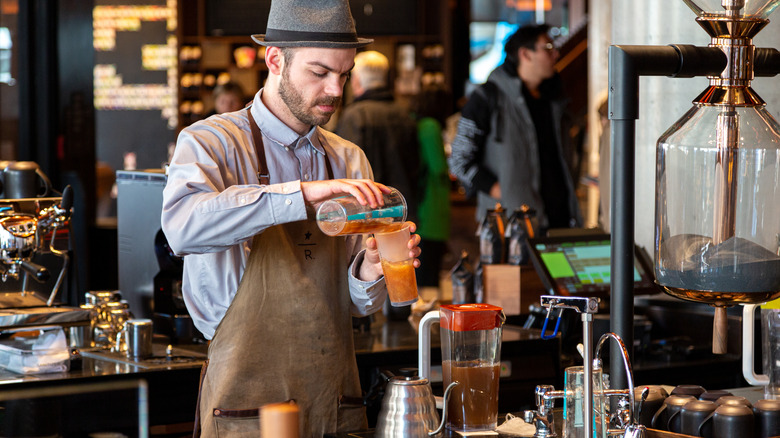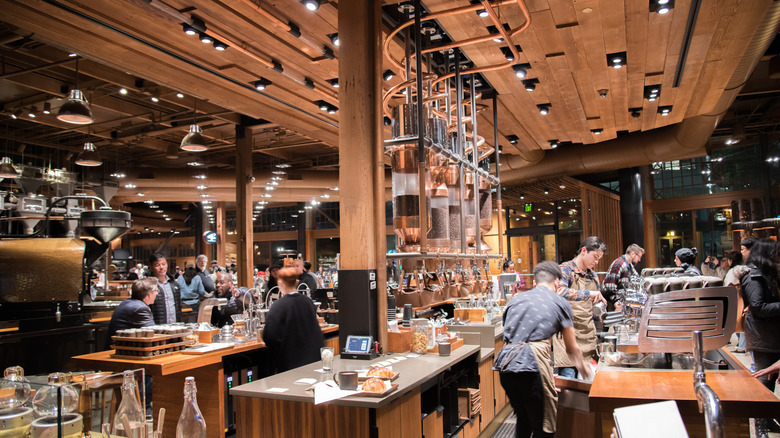What Is The Difference Between Starbucks And Starbucks Reserve?
Those who laud the infusion of rich, fresh-roasted Arabica coffee into everyday life can't deny the Starbucks connection. After former CEO Howard Schultz roamed Italy studying dynamic coffee culture, the inspiration led to a redefinition of coffee drinking in America, explains NBC News. After connecting with coffee cultivators across the globe, the company created a brand that's recognized worldwide. But now that we all know "what's up in the cup" and that coffee is as much experience as it is palette power, what more is there to learn about Starbucks? A lot, apparently — unless you already know about Starbucks Reserve.
The term "reserve" can mean a lot of things, and Starbucks definitely has its own identifying descriptives. But in general, reserve offerings are special allotments of a commodity such as wine, or in this case, coffee. It's often differentiated by rare qualities, ingredients, or production methods. Roasters much smaller than Starbucks have been making reserve coffee for years, including Weavers Coffee in San Francisco, which explains it as either a single-origin or mixed blend of rare coffees available in limited amounts and within short frames of time.
As what's considered the most famous coffee company in the world, per Coffee Affection, it's no surprise that Starbucks has the wherewithal to take reserve coffee to the heights of java heaven. But the difference between regular Starbucks, Starbucks Reserve, and Starbucks Reserve Roasteries takes a little bit of digging. Here's how it breaks down.
What's in your Starbucks cup
Whether popping into your local Starbucks for a Joe-to-go or indulging in a coffee-shop afternoon, you're very likely sipping Arabica coffee. The company's coffee engagement manager Aaron Robinson explains in a Coffee at Home discussion that Starbucks only buys beans from Arabica trees growing at elevations between about 3,000 and 6,000 feet. This gives coffee cherries adequate time to develop, resulting in complex, refined flavors for interesting new blends.
Of course, true java aficionados know there's more to the story. Starbucks Reserve coffees use rare beans from relatively unknown sources such as family-run coffee farms or ancient estate plantations, notes Starbucks Reserve, which also works with cooperatives to improve cultivation and create beans unique to each farm. The beans then undergo a meticulous process of refining, crafting, and coaxing inherent qualities at Starbucks roasteries. Some Reserve coffees, including seasonal ones, are available in 15,000-plus locations, per Starbucks. But the more intense Reserve experience is available only in certain cities.
Starbucks Reserve Roasteries and bars, including the original one in Seattle, take you on the entire coffee journey, from on-site roasting to specialty beverage menus, adventurous coffee flights, and learning how to create coffee concoctions from Certified Coffee Masters. From curated hammered copper fixtures to coffee-book libraries and mixologists splashing up coffee cocktails, it's java nirvana.
So now you're in the know: Starbucks Reserve is a more specialized experience both in your cup and in the well-crafted, elaborate on-site Starbucks Reserve Roasteries and bars. Enjoy!

